The best spaceflight stories of 2022 brought us across the solar system
NASA's Artemis 1 Orion spacecraft made an epic flight to the moon, Russia invaded Ukraine and SpaceX set a few records.

- Artemis 1 launch
- New moon distance
- Russian invasion of Ukraine
- First TikTok from space
- DART impact
- Starship stacks on Super Heavy
- Webb deployment
- Tiangong expands
- Long March 5B falls to Earth
- SpaceX and China record launch numbers
- Falcon 9 flown record 14 times
- Ingenuity Mars helicopter flight records
This past year saw big shakeups in the space world.
An international conflict threw out Russia, one of the top spaceflight contributors since the dawn of the space age, from most international partnerships. A NASA mission brought a human-rated spacecraft around the moon and back again. Meanwhile, records were being set via launches, via flights on Mars and via a NASA moon mission.
We've picked out 12 of the top stories in spaceflight below that helped define 2022, with news flowing from multiple worlds across the solar system.
Related: The top 10 views of Earth from space
Artemis 1 mission to the moon and back
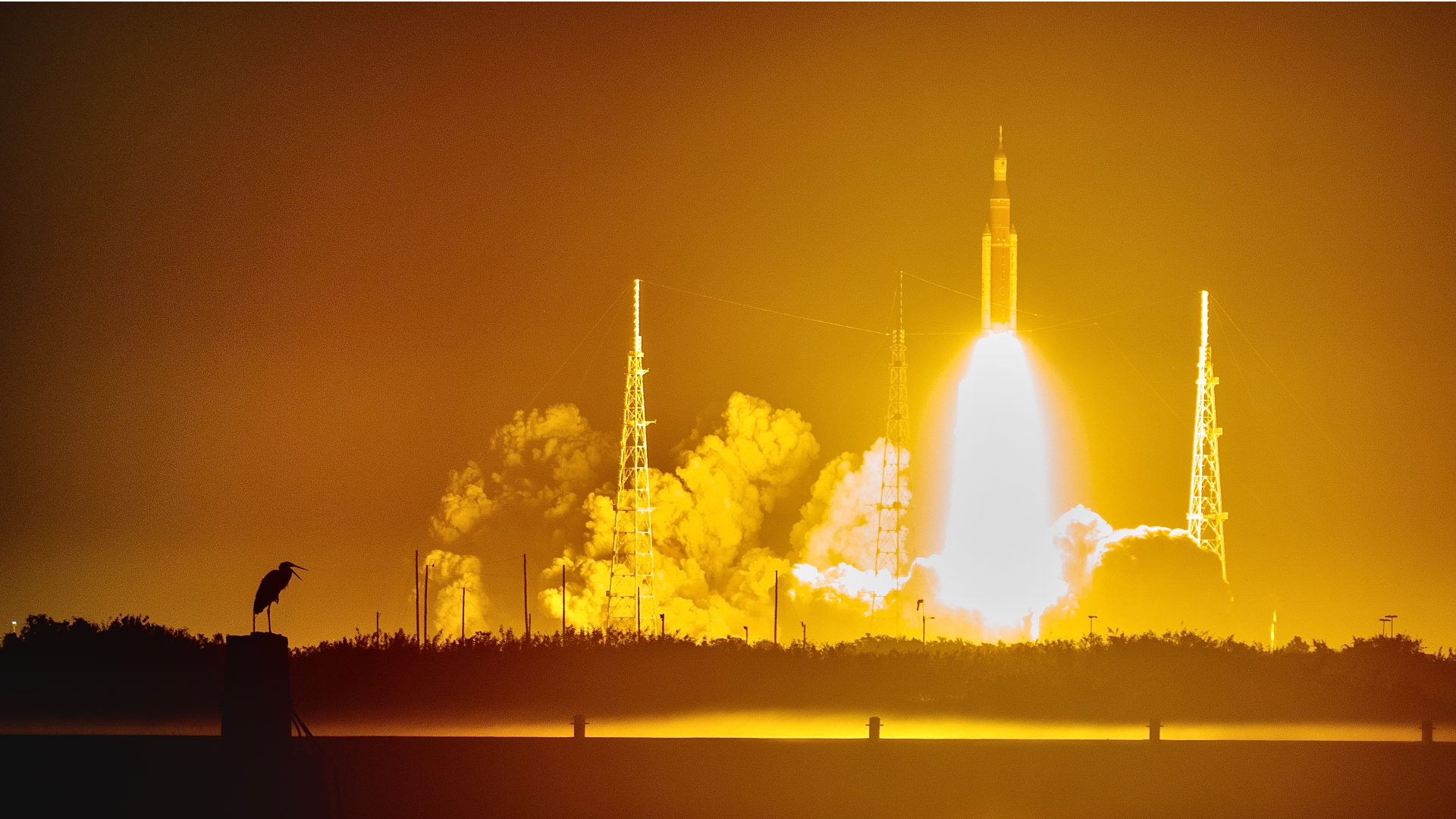
NASA's Artemis 1 mission had considerable trouble getting off the ground in 2022, due to leaks in the Space Launch System rocket and two hurricanes that swept through Florida, among other issues. But once the rocket took off Nov. 16, everything went exactly to plan.
The massive rocket lofted the Orion spacecraft and easily sent it on to the moon for a distant retrograde orbit, meaning it was far from the moon and flying opposite to the direction of the moon's rotation. Orion spent 25.5 days livestreaming footage from deep space before finishing off its mission with a re-entry and splashdown in the Pacific Ocean within sight of its recovery ship, the USS Portland.
If Artemis 1 met all its major goals, NASA plans to send humans the next time on Artemis 2, which will bring a crew of astronauts around the moon no earlier than 2024. Artemis 3, which will bring astronauts down to the moon's surface in 2025 or so, with future Artemis missions landing and/or building out the Gateway space station to support surface operations.
Get the Space.com Newsletter
Breaking space news, the latest updates on rocket launches, skywatching events and more!
Related: NASA's Artemis 1 moon mission was epic and you can relive it in this highlight video
New moon distance record by Orion
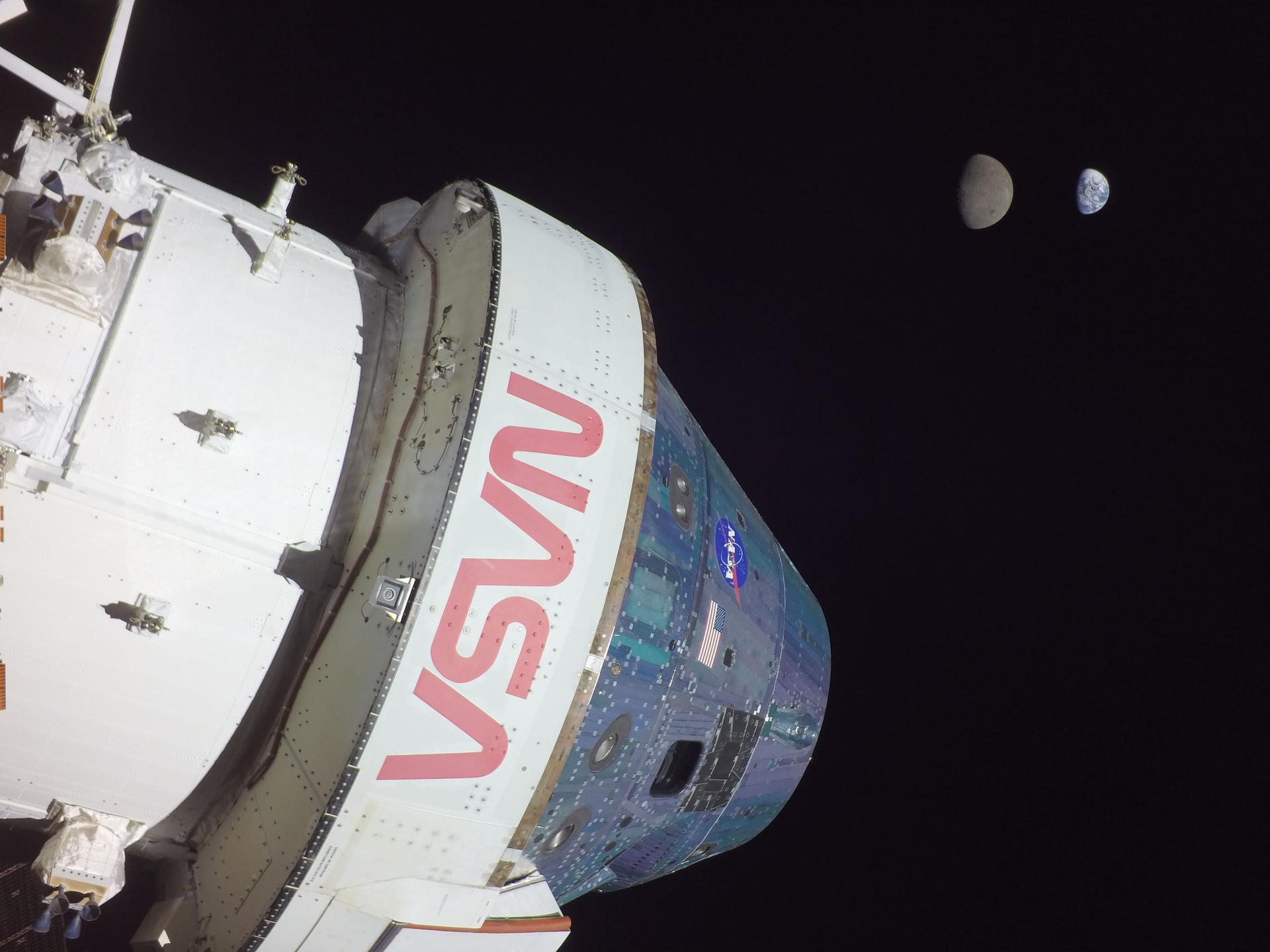
The uncrewed Orion spacecraft not only opened the door for more Artemis missions, but it also set a key record of its own. On Nov. 26, the human-rated vehicle flew past the record-setting distance achieved by the Apollo 13 crew of three astronauts in April 1970.
Apollo 13's crew set the record by accident. They had been set to land two astronauts on the lunar surface in the Fra Mauro highlands, but a spacecraft emergency forced the mission to redirect to a flight around the moon and to fly back home again for a safe splashdown on April 17, 1970.
Orion ultimately flew nearly 270,000 miles (435,000 kilometers) from Earth on Nov. 28, 2022, NASA officials wrote in a statement. That easily surpassed the mark set by the Apollo 13 crew, which flew 248,655 miles (400,171 km) from Earth during their loop around the moon.
In photos: The 10 greatest images from NASA's Artemis 1 moon mission
Russian invasion of Ukraine strains international cooperation

Russia invaded Ukraine on Feb. 24, 2022, alleging territorial supremacy over regions that Ukraine considers its own. The unsanctioned invasion quickly caused ripple effects across the space world, in support of Ukraine. Most space partnerships with Russia were severed, aside from the International Space Station. Russia also has threatened to bring down U.S. commercial satellites observing the war from orbit.
The ExoMars Rosalind Franklin mission to Mars had to stand down from its planned launch date at nearly the last minute, after the invasion prompted the European Space Agency to turn away from Russia's supplied rocket and lander. In November, member states of ESA voted in a record-breaking 17 billion Euro budget in the next three years to in part, save the mission and give it new non-Russian hardware.
OneWeb also saw a last-minute mission change when a set of 36 satellites, originally bound for space from Russian-controlled Baikonur, Kazakhstan, were suddenly taken off the launch pad along with the Russian rocket. (OneWeb never got the satellites back, either.) OneWeb is now building out its constellation through other suppliers, including on Falcon 9 rockets through competitor SpaceX.
In photos: Russia's invasion of Ukraine as seen in satellites
First TikTok from space from astronaut Samantha Cristoforetti
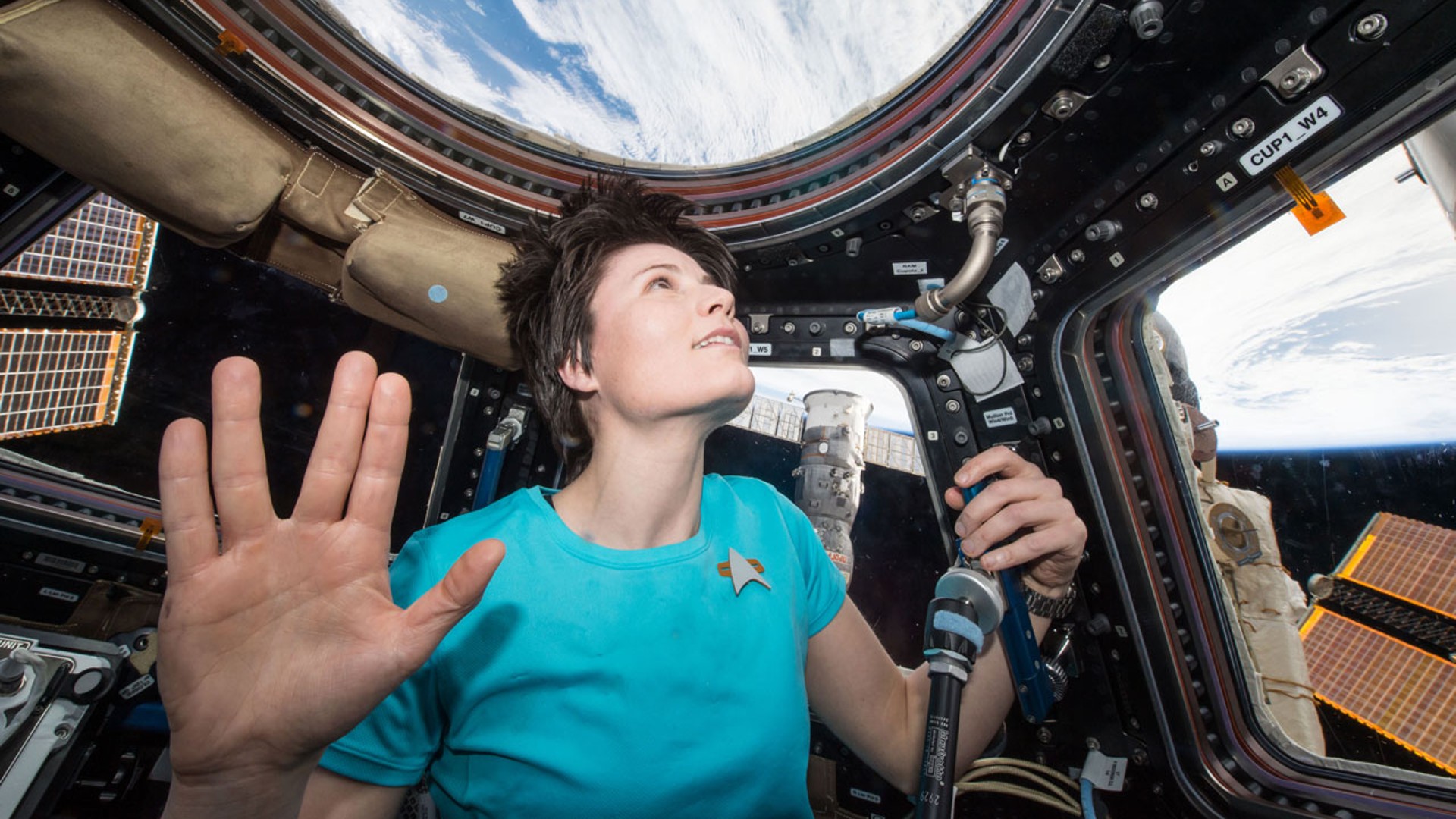
Astronaut engagement expanded to a brand-new platform in 2022 when the European Space Agency's opened a TikTok account and began posting from orbit in May. In the 88-second TikTok video Cristoforetti introduced viewers to the SpaceX Crew-4 launch that brought her to the ISS, and showcased a plush turtle named Zippy and a stuffed monkey called Etta that served as zero-G indicators on the mission.
Cristoforetti used her limited spare time to connect with the public frequently, wearing numerous cosplay costumes, doing yoga and taking frequent photos that she posted on her Twitter account. This was in between briefly serving as the first European female commander of the orbiting complex.
One of her most-remembered orbital cosplays was recreating a famous scene from the movie "2001: A Space Odyssey" in orbit. "I have actually watched [that] multiple times, and I really enjoy and appreciate it deeply as a work of art, and something that has really influenced our visual imagination when it comes to space," Cristoforetti told Space.com shortly after landing in October. "It's decades old now, but it doesn't feel old. It feels very, very current and invaluable."
DART impact moving an asteroid moonlet's orbit
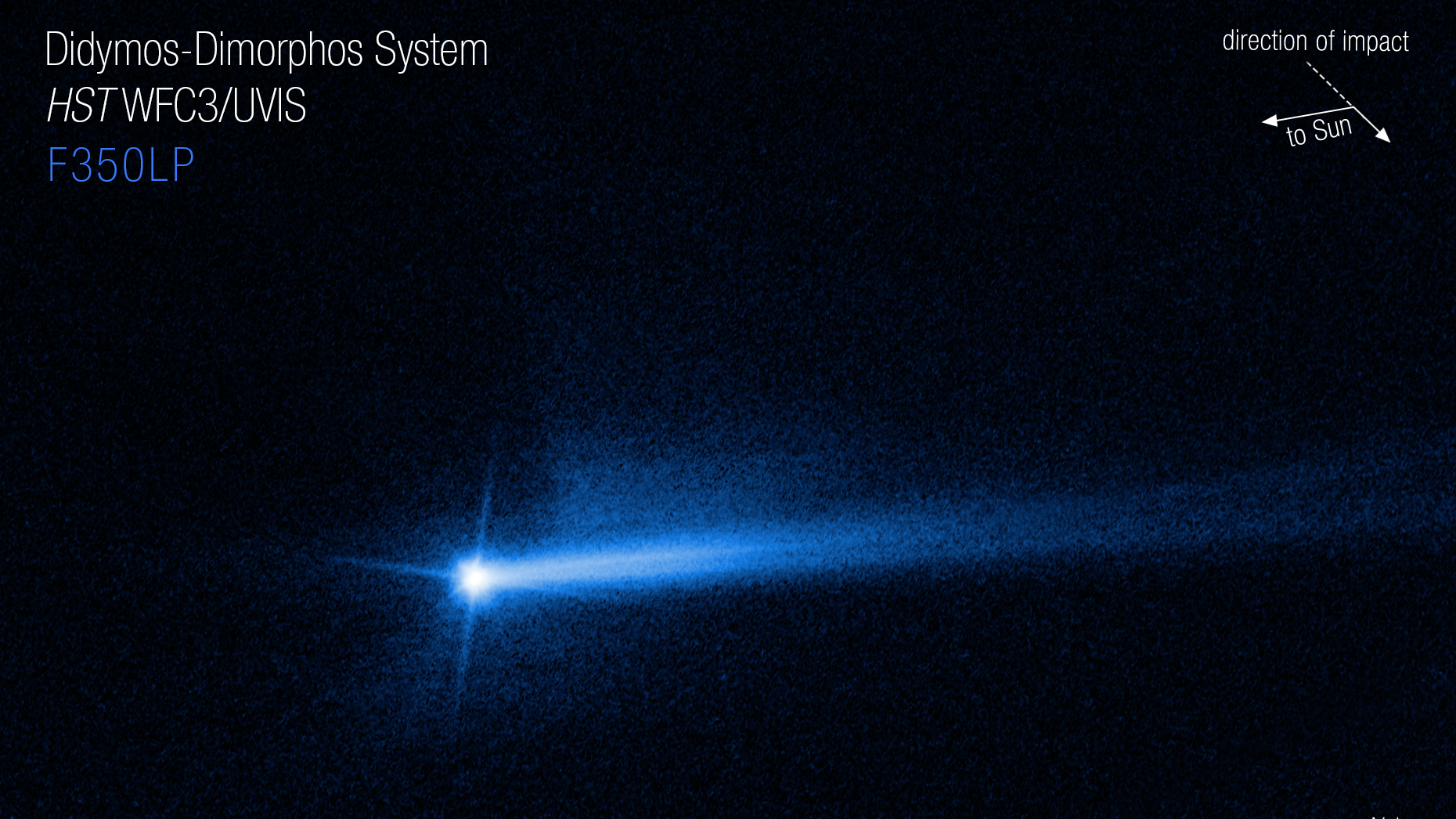
NASA's Double Asteroid Redirection Test (DART) mission was literally a smashing success for planetary defense. The spacecraft tested a "kinetic impactor" technique for altering the trajectories of small bodies in space, offering a tool for warding off any future interlopers heading for Earth; there is no imminent trouble we know of despite decades of searching, however.
DART flew to the Didymos asteroid system and crashed into its moonlet, called Dimorphos, on Sept. 26. DART's goal was to shorten Dimorphos' orbit around a larger asteroid by at least 73 seconds, but DART far exceeded the mark and changed it by an incredible 32 minutes.
NASA has found about 40% of the large asteroids as wide as 500 feet (140 meters) that could pose a threat to the Earth, and keeps an eye out for other hazards through a network of partner telescopes on the ground and in space.
Related: Just how many threatening asteroids are there? It's complicated.
Starship stacks on Super Heavy for the biggest rocket ever
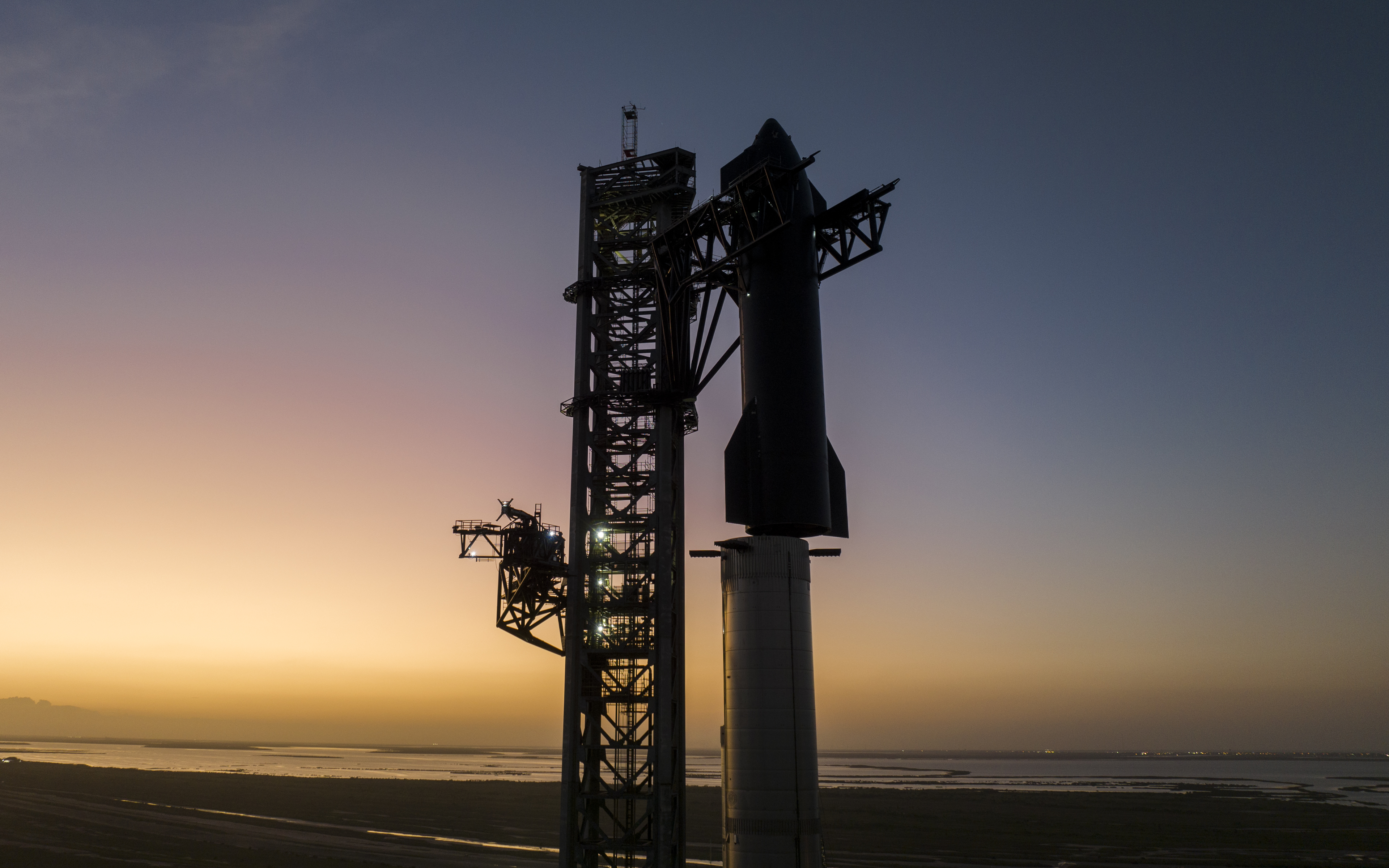
Several times in 2022, SpaceX stacked, unstacked and performed engine testing of the Starship spacecraft and Super Heavy rocket near Boca Chica Village in Texas. The duo stands 395 feet tall (120 m), or more than 30 feet (9 m) taller than NASA's massive Saturn V moon rocket. So when the system is put together, that makes SpaceX's stack the tallest rocket ever.
Starship was grounded for all of 2022 to date, despite SpaceX's hopes that it would achieve orbit this year. The company had not taken into account the Federal Aviation Administration's need to conduct a programmatic environmental assessment of its facilities in south Texas, called Starbase. The FAA completed its delayed review in the mid-year but provided an action list of items for SpaceX to fix ahead of launching Starship to space for the first time.
Starship has continued to receive lucrative contracts nonetheless in 2022, however, including a commitment to supply landing systems for NASA's Artemis 4 moon mission and agreeing to fly billionaire Dennis Tito around the moon (along with Tito's wife, Akiko.) The dearMoon crew, assembled by billionaire Yusaku Maezawa in 2018, was also announced in late 2022 for a presumptive Starship flight in the coming years.
In photos: SpaceX rolls Starship prototype to launch pad ahead of orbital test flight
James Webb Space Telescope deployment
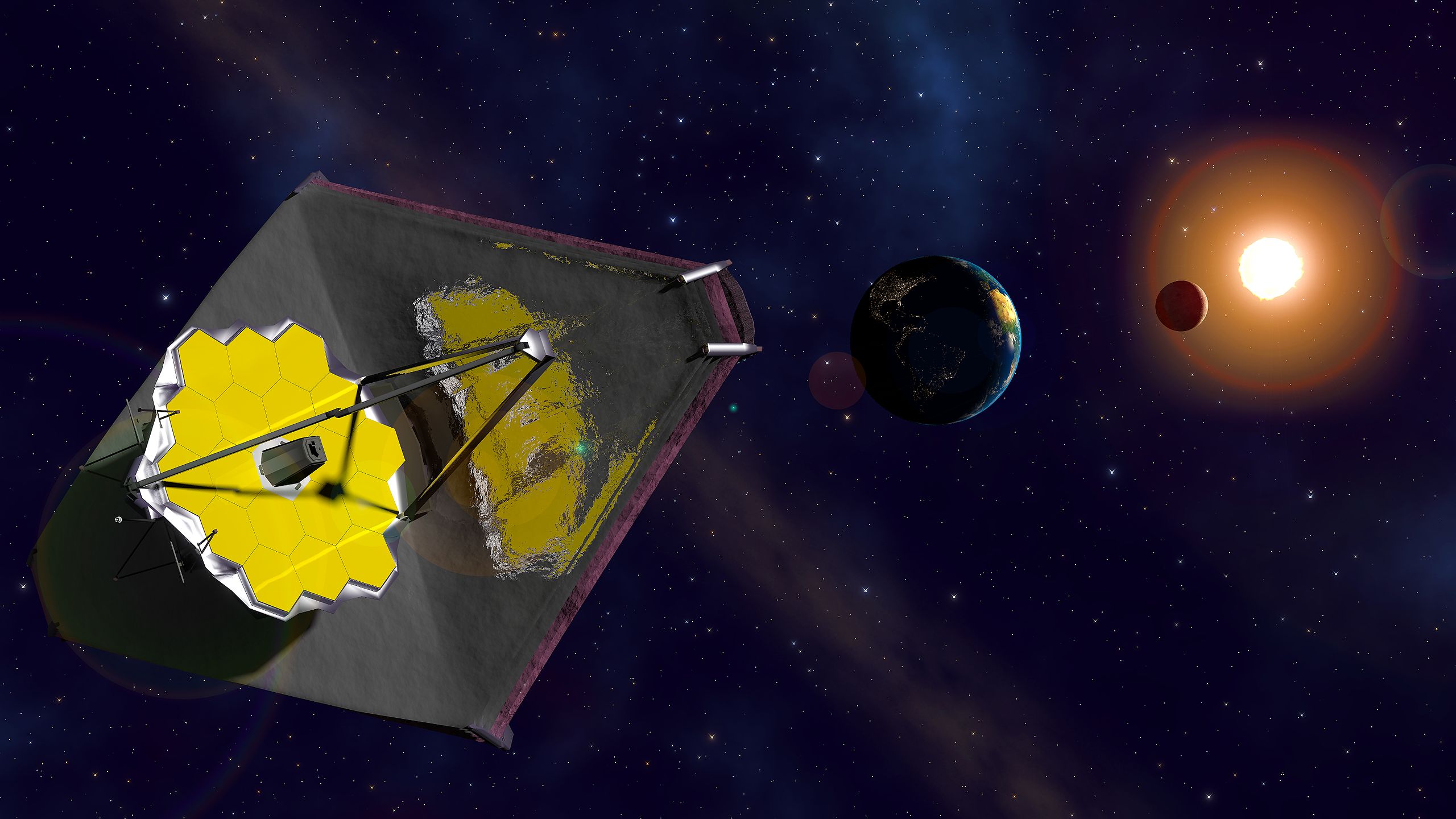
The $10 billion James Webb Space Telescope (also known as Webb or JWST) stunned the world over and over again in 2022 with science-quality images of planets, galaxies and other objects starting on July 12. That was no small feat, as the telescope team had to accomplish hundreds of steps to get the telescope ready.
NASA's largest and most capable space telescope launched on Dec. 25, 2021 to look at the universe in the deep infrared. It journeyed to a stable location in space to take advantage of the Earth's and the sun's gravity, to use a minimum of fuel. It then deployed its honeycomb mirror and performed series upon series of tests of its instruments and mirrors.
Now ready for science, the telescope has four different instruments that can collect data in 17 different modes. Webb plans to look back at the first stars and galaxies of our universe, and solar system objects nearby. So far, its largest major issue has been tweaking observations to get around micrometeoroid impacts, but aside from that the telescope has expected to last about 20 years.
Gallery: James Webb Space Telescope's first photos
China expands Tiangong space station
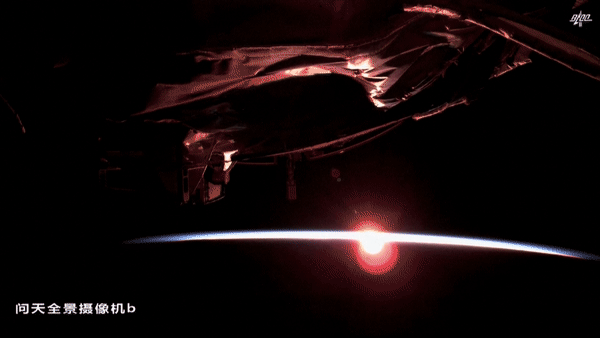
The China National Space Administration, which operates independently of the international space community due to a U.S. ban on bilateral work with NASA, has been building out its Tiangong space station in 2022. The station is modular, much like the ISS, and now includes a core module and two laboratories. It is roughly a fifth the size of the ISS.
After bringing the Tianhe capsule and Wentian module to space in April 2021 and September 2022, respectively, China completed the T-shaped station's base shape with the launch of Mengtian on Oct. 31. The country plans to keep Tiangong running for at least a few years, and hopes to keep it permanently staffed with taikonauts (Chinese astronauts) and perhaps host commercial missions as well.
China's Shenzhou 14 taikonauts were key to completing the station, spending more than six months in space before landing on Dec. 4. Crew members Chen Dong, Liu Yang and Cai Xuzhe saw the second and third modules arrive and conducted three spacewalks for facility check-ups.
Related: China lays out big plans for its new Tiangong space station
Long March 5B core stages fall from space uncontrolled
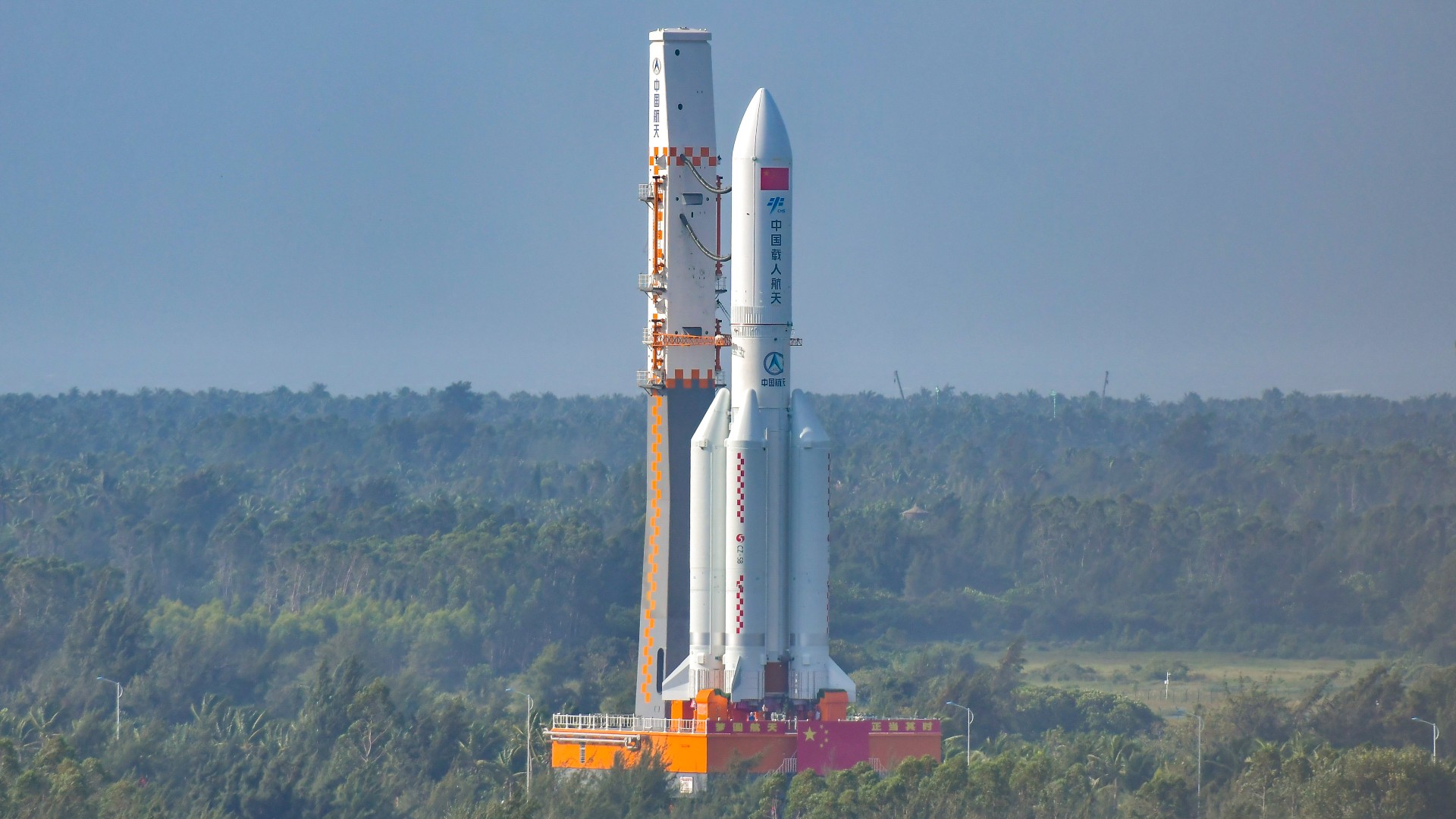
The Tiangong launches have come with a price, however. A massive Long March 5B rocket was required to heft the big modules to the space station, and China has no contingencies to bring the core stage back to Earth aside from letting the massive stage fall uncontrolled. Twice in 2022, the world waited to see where the rocket piece would fall.
In November 2022, a 23-ton stage fell into the south-central Pacific Ocean and in July, a 25-ton core stage fell over the Indian Ocean. Previous to that were two other incidents: in April 2021, another core stage fell into the Indian Ocean and in May 2020, chunks of rocket reportedly fell across the Ivory Coast.
Despite worries from NASA and the U.S. military and other international observers, there are no international agreements in place to prevent such a thing from happening again, Marlon Sorge, Executive Director for The Aerospace Corporation's Center for Orbital and Reentry Debris Studies, said during a media briefing on Nov. 2.
Related: China's Long March rocket family: History and photos
SpaceX and China have record launch numbers
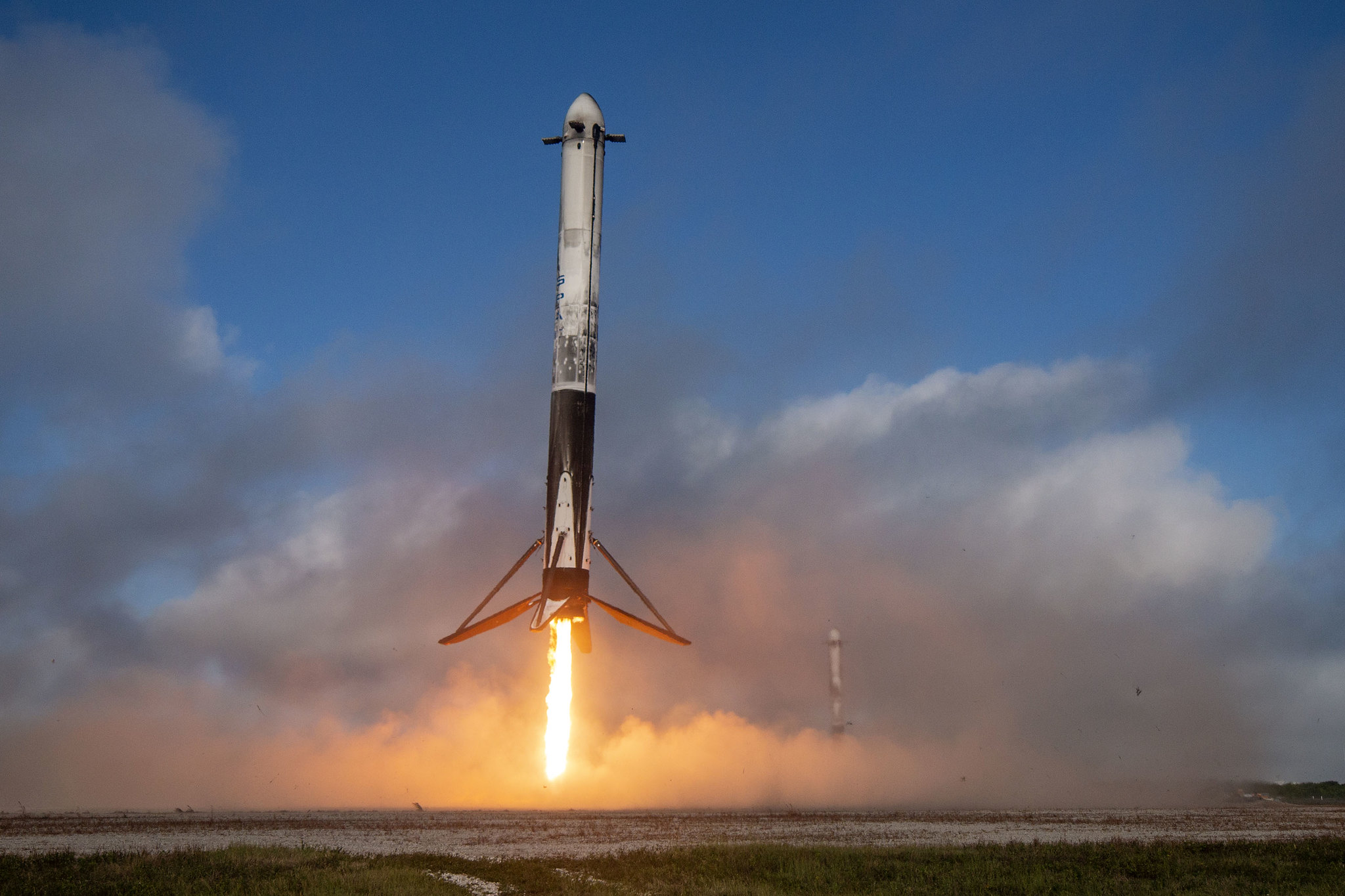
SpaceX and China have both launched frequently in 2022, with the American company and Asian country each setting records as of publication date (which may be surpassed by the time the year finishes.)
As of Dec. 13, SpaceX has launched 56 rockets into orbit with no failures, easily surpassing its 31 launches of 2021. Many of these launches were for Starlink, a bright broadband constellation that is causing worries among astronomers and Indigenous, Native American and other populations for its effects on the night sky. Other launches were in support of the ISS, the U.S. military or private customers. Falcon Heavy flew once in November on its first launch since 2019, and the rest were Falcon 9 rockets.
Also as of Dec. 13, China has launched 60 times in 2022 and 58 of those were successes; its record in 2021 was 55 launches. Some were directly through the government while others were with private companies that are contractors of the government. Many of China's launches were of Earth observation satellites that may also have military purposes, with others in support of the Tiangong space station.
Related: Private Chinese rocket reaches orbit 2 years after test-flight failure
SpaceX Falcon 9 rocket flown for record 14 times
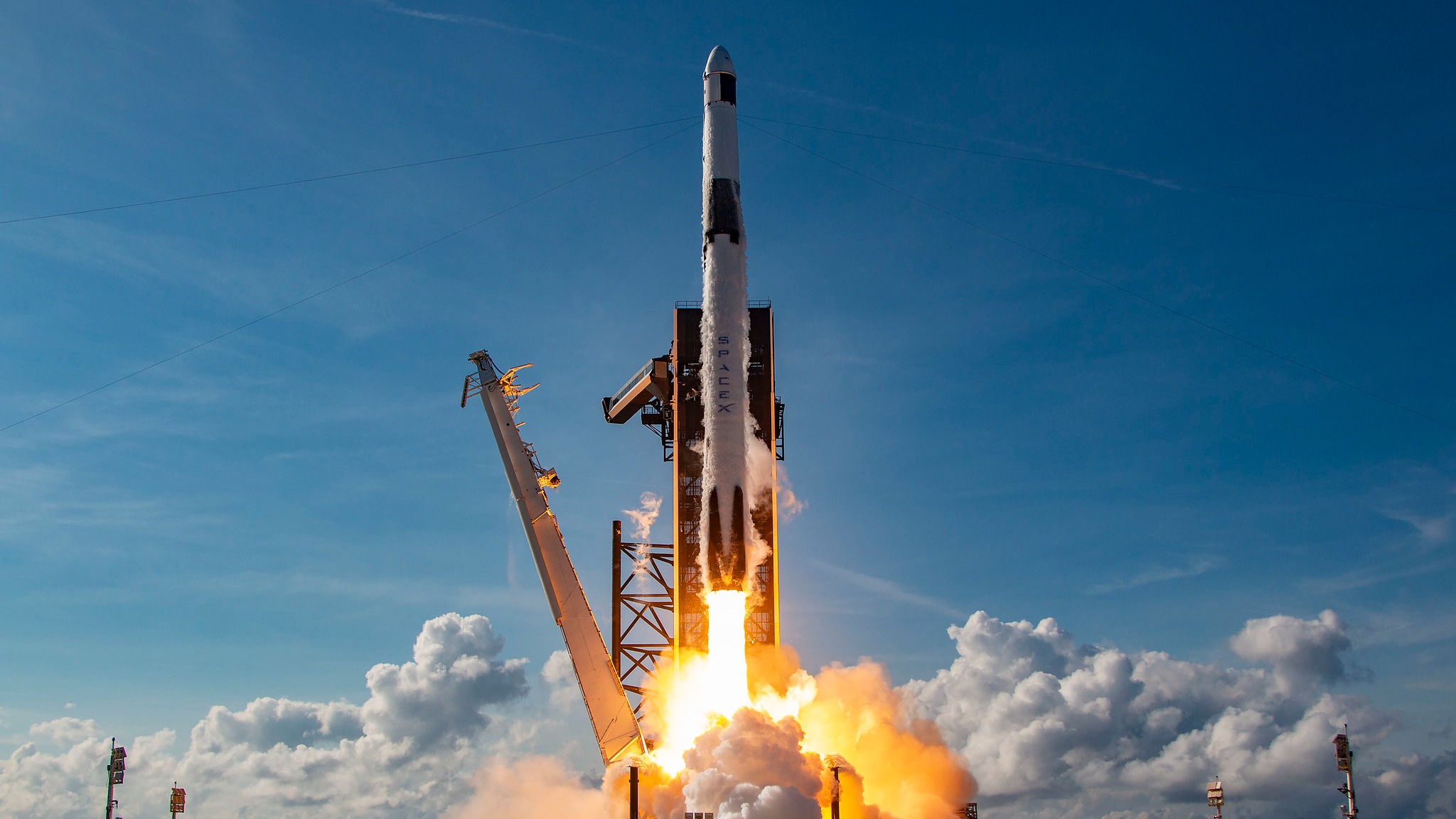
SpaceX was one of first companies to use rocket reusability (Blue Origin is another) and in 2022, it tied its record of 14 launches for a single booster. Falcon 9 rockets used by SpaceX are designed to land after most missions atop a drone ship or a tarmac nearby the launch site. Lately, SpaceX has been livestreaming most of those landings using live cameras on the rocket or at the landing site.
The record-tying 14th mission took place on Oct. 8 when SpaceX sent two commercial communications satellites to orbit. The Falcon 9 used on that mission successfully sent the Intelsat Galaxy 33 and Galaxy 34 satellites to orbit before its first stage came back to Earth. Around eight minutes after liftoff, the stage touched down on SpaceX's A Shortfall of Gravitas droneship in the Atlantic Ocean.
Previous to this mission, the rocket launched the GPS III-3 and Turksat 5A satellites, the Transporter-2 rideshare mission and 10 Starlink internet satellite batches. The record-setting 14th booster mission happened only one month before, in September, during a launch that sent the BlueWalker 3 communications satellite and 34 Starlinks into space.
In photos: The 20 most memorable SpaceX missions from its 1st 20 years
Ingenuity Mars helicopter sets distance and height flight records
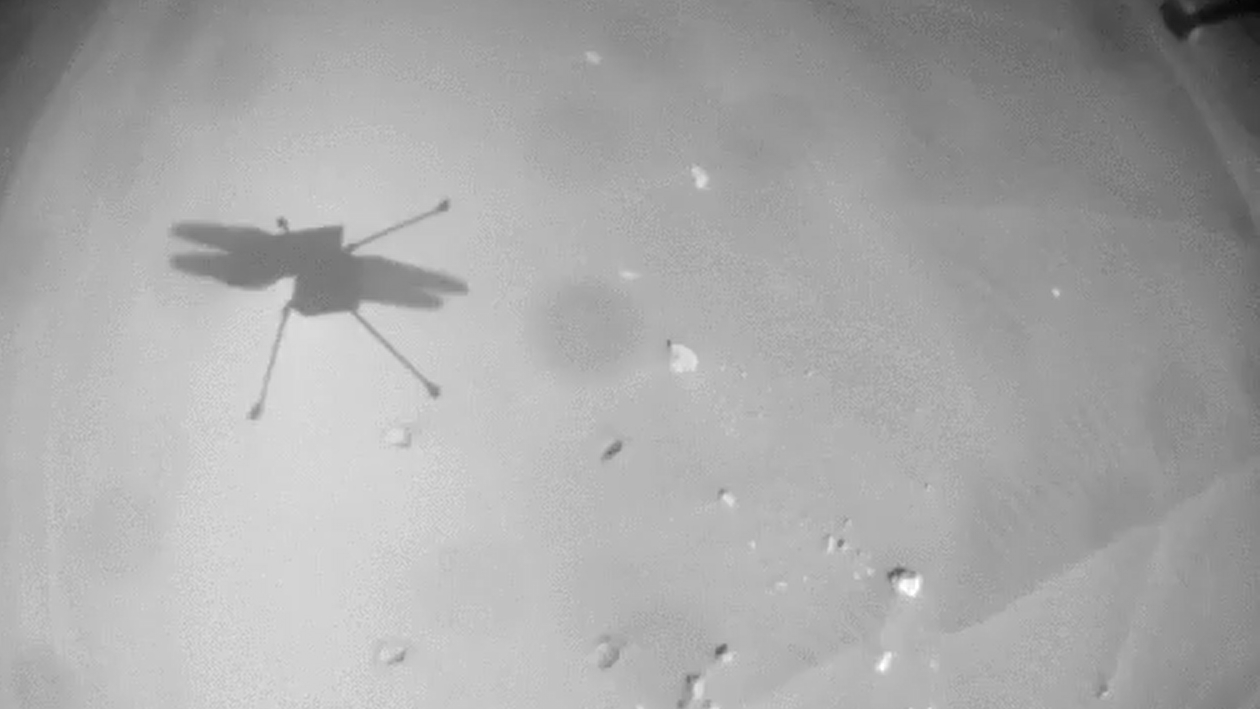
The Ingenuity helicopter on Mars is one of the unexpected highlights of the larger Perseverance rover mission that landed in Gale Crater in February 2021. Ingenuity was the first-ever drone to fly on Mars and was only rated to last for five flights. It is now shooting for 40 flights and still going strong, serving as a scout for Perseverance as the rover collects promising samples that may host life for eventual return to Earth.
Ingenuity set both distance and altitude records in 2022. On the drone's 25th flight on April 8, it flew an unprecedented distance of 2,310 feet (704 meters) at also a record-setting speed of about 12 mph (5.5 meters per second). The flight overall lasted 161.3 seconds, according to NASA statistics. Then during its 35th flight on Dec. 3, the helicopter went higher than ever before, soaring to 46 feet (14 meters) above the surface — more than three stories high.
Ingenuity has been so successful in its mission that NASA now proposes to send two sample pickup helicopters to Mars to bring the caches of rocks Perseverance set aside to a surface lander. The lander would then relay the payload back to Earth through handoff to another spacecraft.
In photos: 12 amazing images from the Perseverance rover's first year on Mars
Elizabeth Howell is the co-author of "Why Am I Taller?" (ECW Press, 2022; with Canadian astronaut Dave Williams), a book about space medicine. Follow her on Twitter @howellspace. Follow us on Twitter @Spacedotcom or Facebook.
Join our Space Forums to keep talking space on the latest missions, night sky and more! And if you have a news tip, correction or comment, let us know at: community@space.com.

Elizabeth Howell (she/her), Ph.D., was a staff writer in the spaceflight channel between 2022 and 2024 specializing in Canadian space news. She was contributing writer for Space.com for 10 years from 2012 to 2024. Elizabeth's reporting includes multiple exclusives with the White House, leading world coverage about a lost-and-found space tomato on the International Space Station, witnessing five human spaceflight launches on two continents, flying parabolic, working inside a spacesuit, and participating in a simulated Mars mission. Her latest book, "Why Am I Taller?" (ECW Press, 2022) is co-written with astronaut Dave Williams.









